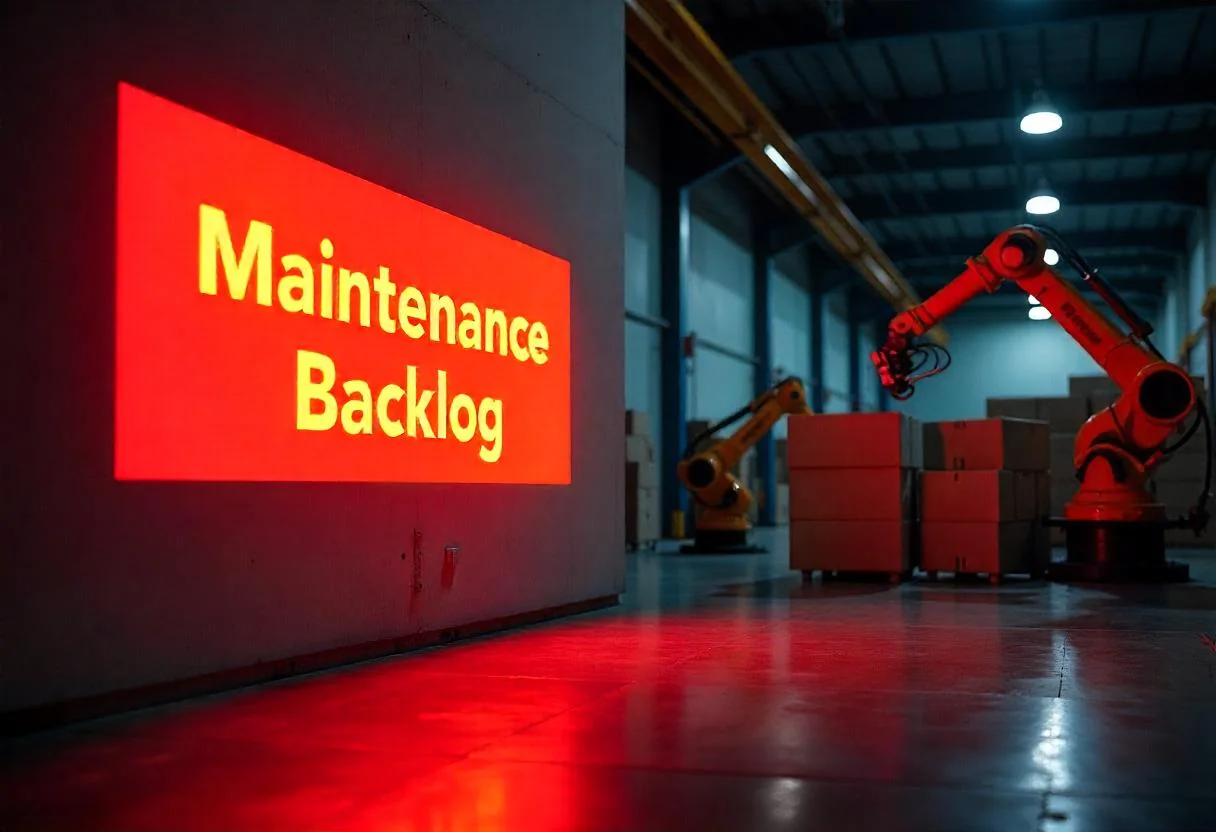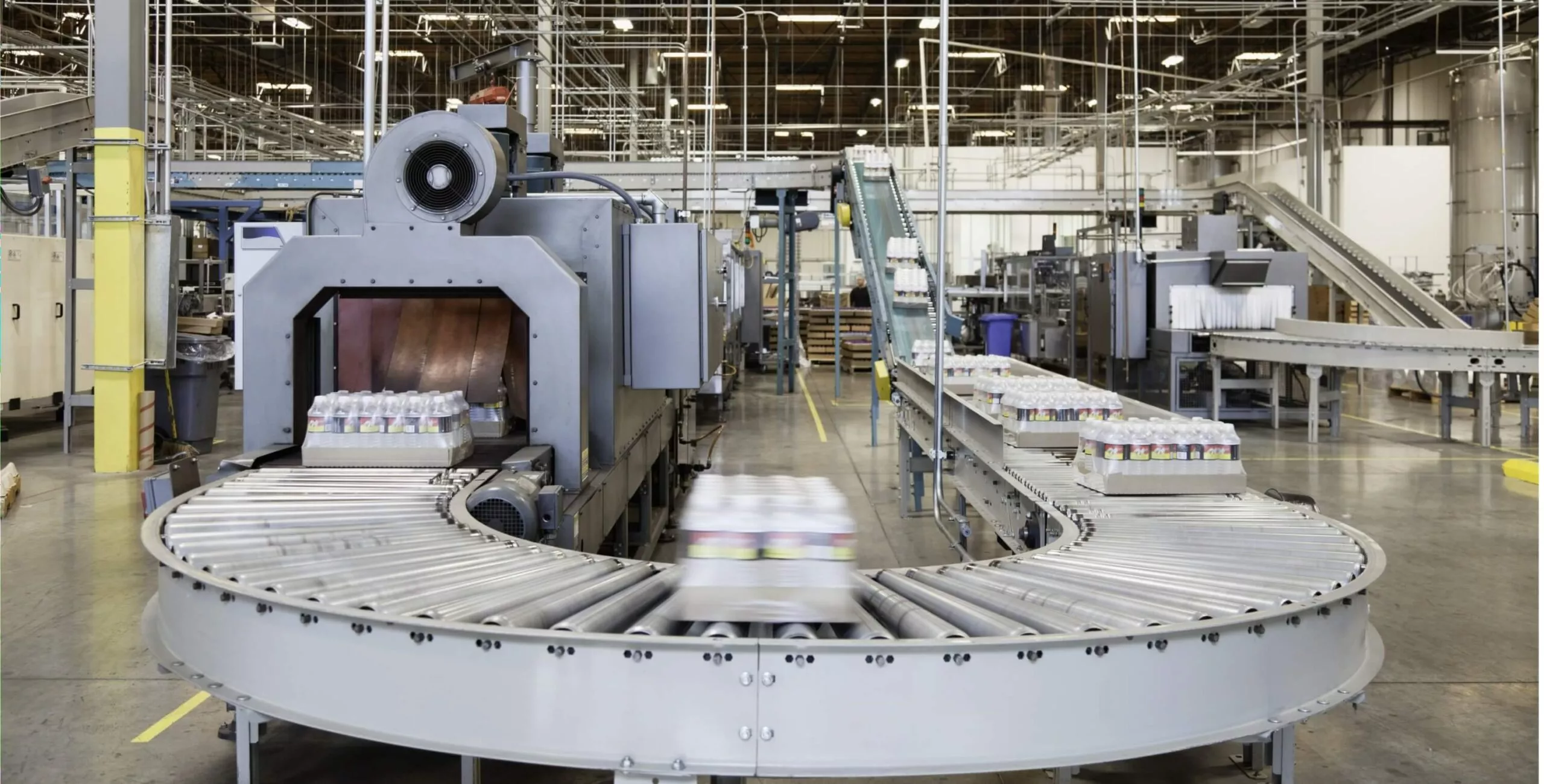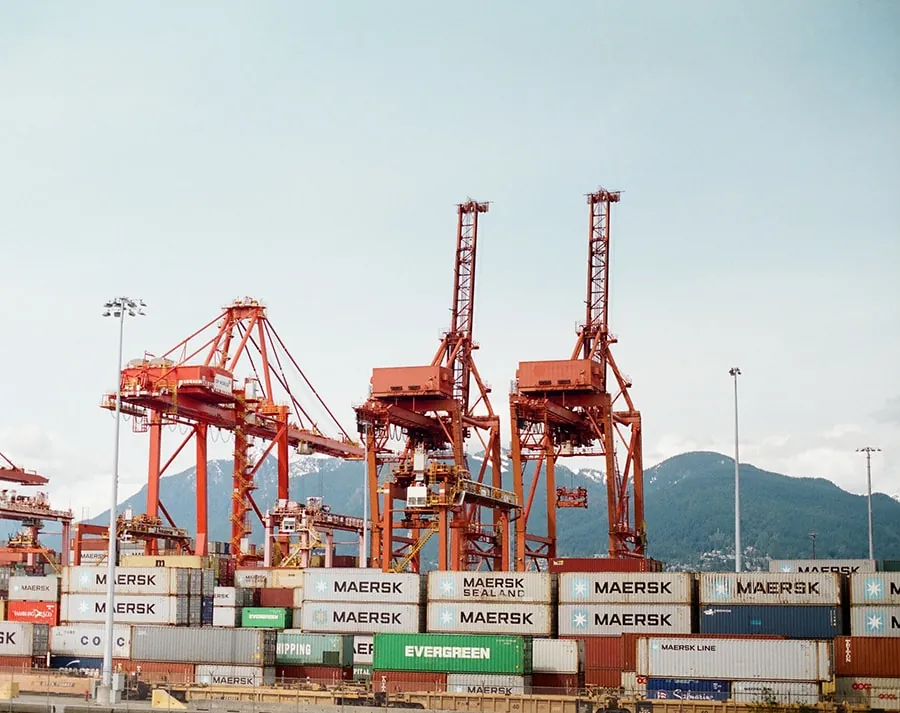Keeping up with maintenance tasks can feel overwhelming, especially when new requests keep coming in while older ones pile up. A well-structured maintenance backlog helps you stay on top of everything, ensuring that no task slips through the cracks. It acts as a central place where all pending maintenance work is listed, prioritized, and scheduled.
Instead of reacting to problems as they come up, you can plan, assign resources properly, and prevent small issues from turning into bigger ones. Whether you’re managing a facility, a fleet, or a manufacturing unit, having a clear backlog means smoother operations, fewer unexpected breakdowns, and better use of time and budget. Let’s go over how you can build a maintenance backlog that works for you.
What is a Maintenance Backlog?
A maintenance backlog is a list of maintenance tasks that still need to be done to keep equipment, systems, or facilities in good condition. It includes tasks that have been identified but haven’t been scheduled or completed yet. Maintenance teams manage this list, deciding which tasks should be done first based on urgency.
The backlog can include different types of maintenance:
- Preventive maintenance – Routine tasks done to prevent breakdowns.
- Corrective maintenance – Repairs needed to fix issues that have already occurred.
- Predictive maintenance – Tasks based on data and monitoring to prevent future problems.
Keeping track of maintenance tasks through a backlog helps teams organize their work and ensure nothing important gets missed.
How to Manage and Prioritize Maintenance Backlog
When maintenance tasks start piling up, it’s important to have a clear plan for handling them. Some issues need urgent attention, while others can wait without causing major problems. Here are some ways to decide what should be tackled first:
-
Start with the Most Important Equipment
Some machines or systems are more important than others, especially those that impact production or safety. If a critical piece of equipment fails, it can lead to costly downtime or even safety risks. Maintenance tasks related to these should always be handled first to keep operations running smoothly and safely.
-
Assess the Risks Involved
Not all maintenance tasks carry the same level of urgency. Looking at each task through a risk-based approach can help. Ask questions like:
- Will delaying this task create a safety hazard?
- Could it disrupt operations?
- How much would it cost to fix if the issue gets worse?
Tasks that pose higher risks should be moved to the top of the list.
-
Consider How Long Work Orders Have Been Pending
Older work orders that have been repeatedly delayed might be turning into bigger, more complex issues. Keeping track of how long each task has been waiting can help prevent minor problems from turning into major repairs. It’s a good idea to check regularly and make sure long-pending tasks don’t slip through the cracks.
-
Focus on Preventive Maintenance First
Regular maintenance helps catch small issues before they turn into expensive breakdowns. Prioritizing preventive maintenance over reactive fixes can reduce the number of emergency repairs, lower costs, and keep equipment running longer. If maintenance teams stay ahead with scheduled check-ups, they can prevent sudden failures and avoid unexpected downtime.
How Much Maintenance Backlog is Too Much?
Maintenance backlog refers to tasks that are pending over a certain period. Having some backlog is normal and even necessary. If there is no backlog at all, it could mean that there are more technicians than required. The goal isn’t to completely clear the backlog but to keep it at a manageable level.
A good way to assess backlog is by looking at how much work is pending per technician. In many cases, around two weeks’ worth of tasks per technician is considered reasonable. However, the right amount can vary depending on the business, the type of assets being maintained, and the frequency of maintenance tasks. Instead of focusing on eliminating backlog, businesses should focus on tracking and managing it properly.
To get an accurate picture, it’s important to define what is included in the backlog. Teams should have a clear understanding of what counts as backlog and ensure there is agreement on how it is measured. This avoids confusion and helps in planning resources better.
It’s also useful to separate different types of maintenance tasks. Some backlog may come from preventive maintenance while other tasks may be corrective. Understanding this difference allows businesses to prioritize urgent work while ensuring routine maintenance is not neglected. By properly categorizing and delegating tasks, businesses can make sure their maintenance team is used efficiently.
Industry Standards for Maintenance Backlogs
| Industry / Operation Type | Standard Maintenance Backlog | Notes |
|---|---|---|
| Manufacturing | 2-4 weeks | Keeping the backlog within this range helps prevent equipment failures that could slow down production. If maintenance tasks pile up beyond four weeks, it may lead to unplanned downtime and production bottlenecks. |
| Heavy Industrial (e.g., Mining) | 4-6 weeks | Equipment in these industries is complex, and sourcing parts can take longer. A slightly longer backlog is expected, but delaying maintenance too much can result in costly breakdowns and safety risks. |
| Food and Beverage | 1-2 weeks | Strict health and safety regulations require a faster maintenance cycle. Any delays could lead to contamination risks or non-compliance with industry standards, affecting product quality and safety. |
| Utilities (e.g., Hydropower) | 3-5 weeks | Since utility systems often have built-in redundancies, a slightly longer backlog can be manageable. However, reliability is critical, and extended delays could disrupt service or lead to unexpected failures. |
| Pharmaceutical | 1-2 weeks | Compliance with industry regulations and quality control standards makes it essential to address maintenance tasks quickly. A short backlog helps maintain operational integrity and prevent regulatory issues. |
Understanding What Causes Maintenance Backlogs
Here are some common reasons why maintenance work gets delayed:
-
Insufficient Staffing
When there aren’t enough staff members to handle the maintenance work, it can lead to a backlog of tasks. A smaller team may struggle to keep up with the daily demands, causing maintenance tasks to pile up. Without enough hands on deck, important repairs and inspections might be delayed, leading to further problems down the line.
-
Unavailable Parts
Sometimes, maintenance work gets delayed simply because the necessary parts or materials aren’t available. Whether it’s because of supply chain issues or poor inventory management, not having the right parts at the right time can stop workers from completing tasks on schedule. This causes work to back up, especially if repairs or replacements are urgent.
-
Overlooked Work Orders
If work orders aren’t properly tracked or prioritized, they can be overlooked. This often happens in busy environments where multiple tasks need to be handled at once. Without a system to ensure all work orders are followed up on, some requests may slip through the cracks, contributing to the maintenance backlog.
-
Equipment Breakdowns
Frequent breakdowns of critical equipment can create a backlog of maintenance work. When machines stop working unexpectedly, repairs and troubleshooting become urgent, causing delays in other scheduled maintenance. These breakdowns can divert resources away from other tasks, leading to more items piling up in the maintenance queue.
-
Inaccessible Equipment
If equipment or machinery is located in hard-to-reach areas, or if there are logistical issues in accessing it, maintenance tasks may get delayed. This can be especially problematic in large facilities or outdoor areas where equipment is spread out or difficult to get to. Inaccessible equipment can prevent timely repairs and add to the backlog.
-
Budget Constraints
Limited budgets can severely affect maintenance operations. If there isn’t enough money allocated for repairs, parts, or additional staff, tasks may be delayed or postponed. When funds are tight, non-urgent tasks may be put off in favor of more pressing issues, but this often results in a growing maintenance backlog that’s harder to manage over time.
-
Emergency Failures
Unexpected emergencies, such as major equipment failures or safety issues, can take priority over regular maintenance tasks. When these emergencies arise, resources are redirected to handle the immediate problems, which causes delays in scheduled work. This can quickly lead to a backlog if emergency failures occur frequently.
-
Process Inefficiencies
Sometimes, inefficiencies in how maintenance processes are handled can contribute to delays. This might include poor communication, disorganized work orders, or unclear priorities. If processes aren’t streamlined and well-managed, maintenance tasks can get delayed or overlooked, creating a growing backlog of work that needs to be addressed.
Types of Maintenance Backlog
-
Preventive Maintenance Backlog
Preventive maintenance tasks are those that are planned to help avoid future problems. These tasks are scheduled regularly and aim to keep your equipment running smoothly and in good condition.
For example, it could include things like inspecting equipment, lubricating parts, or calibrating systems to ensure everything works as it should. A backlog in this area means these planned tasks haven’t been completed on time, which could lead to equipment failure or reduced performance down the road.
-
Corrective Maintenance Backlog
Corrective maintenance is all about fixing problems after they happen. This type of backlog builds up when equipment breaks down, malfunctions, or faces safety issues. When something goes wrong unexpectedly, corrective maintenance is needed to get everything back to normal. Having a backlog here means issues are waiting to be fixed, which could cause more downtime or operational disruptions if not addressed promptly.
-
Predictive Maintenance Backlog
Predictive maintenance involves using technology and data to predict when equipment might fail before it happens. Sensors, data analysis, and condition-monitoring tools help identify when maintenance is needed. A backlog in predictive maintenance means some tasks have been identified but not yet carried out.
In industries like medical manufacturing, where equipment failure can lead to significant issues, dealing with a predictive maintenance backlog quickly is critical to avoid unexpected breakdowns and ensure smooth operations.
How to Calculate Maintenance Backlog
To calculate your maintenance backlog, start by figuring out how many work orders are still pending and then compare that to how much your maintenance team can handle within a given time frame.
Formula to Calculate Maintenance Backlog:
Backlog Workdays = Σ (Estimated Work Hours per Task) / (Total Productive Hours per Day)
Here’s a breakdown of what this means:
- Σ (Estimated Work Hours per Task): This is the total time it will take to complete all the tasks in your backlog. Add up the estimated time for each task.
- Total Productive Hours per Day: This is the amount of time your maintenance team can work in a day, factoring in things like breaks, lunch, and admin tasks. You don’t want to count the total hours in a day; instead, you count the hours your team can realistically spend working on the backlog.
Example:
Let’s say you want to track the maintenance backlog using work weeks instead of daily hours. Here’s how you would do it:
- You have 85 tasks in your backlog, and the total estimated time to complete all these tasks adds up to 192 work hours.
- Your maintenance team consists of four technicians, and each works eight hours per day. However, after accounting for breaks, lunch, and administrative work, your team is available for a total of 24 productive hours per day (4 technicians x 6 hours each).
- To find the total productive hours your team can work per week, multiply the daily productive hours by the number of workdays in a week:
- 24 hours/day x 5 days/week = 120 hours/week.
- Now, apply the formula:
- Backlog Work Weeks = 192 work hours / 120 hours/week
- Backlog Work Weeks = 1.6 weeks
To make this easier to understand, we round it up to 2 weeks. So, if your maintenance team works exclusively on clearing the backlog, it will take them approximately 2 weeks to complete it.
Important Note:
Keep in mind that this number will keep changing as new tasks get added to the backlog and others are completed. It’s a dynamic calculation, so you’ll need to update it regularly to get an accurate picture of the backlog.
Strategies for Managing Maintenance Backlog
-
Getting Everyone on Board
Starting a maintenance backlog project can be tough, especially when other priorities like production take center stage. It’s important to get everyone to understand why focusing on maintenance will help in the long run. To do this, explain how the backlog can impact operations, but also show the benefits, like fewer breakdowns, reduced costs, and smoother production down the line. Showing how this plan helps everyone achieve long-term goals, even if it affects short-term targets, can help gain support from other teams.
-
Prioritizing Maintenance Tasks Based on Impact
Before jumping into the work, it’s essential to figure out what needs attention first. The best way to do this is by ranking tasks in order of importance. Start by looking at how critical the asset is to your operations. If something breaks down often and is important for production, it should be at the top of the list. Also, pay attention to tasks that have been delayed multiple times, as these are likely to cause bigger problems later. Finally, consider how long the task will take and its difficulty—tasks that are quicker to fix or cause less downtime should also be prioritized.
-
Evaluating Available Resources
Before diving into the work, take stock of what resources you have. This includes assessing the skills and certifications of your maintenance team—are they ready to handle the tasks at hand? Also, check if you have all the necessary parts, tools, and safety equipment needed for each job. If you’re missing anything, make sure you know how long it will take to get them. Additionally, think about the time available for maintenance work—how much downtime can you afford? With the right resources and a clear timeline, you can plan your work in a better way..
-
Preventive Maintenance for the Future
One of the best ways to prevent maintenance backlogs is by implementing a strong preventive maintenance strategy. This involves regularly scheduled maintenance activities to keep equipment running smoothly and prevent unexpected breakdowns. By staying ahead of problems, you can reduce the need for reactive fixes, which often pile up into a backlog. Planning routine checks, cleaning, and part replacements can help catch small issues before they become big ones.
-
Using Maintenance Management Software (CMMS)
A Computerized Maintenance Management System (CMMS) can be a game changer when managing maintenance tasks. It helps keep everything organized and ensures that no task is missed. With features like real-time asset tracking, automated scheduling, and quick access to maintenance history, CMMS makes it easier to stay on top of your workload. It also helps identify patterns in equipment performance, allowing you to address issues before they turn into major problems. This proactive approach helps reduce backlogs and maintain smooth operations.
Using NEXGEN CMMS to Manage Maintenance Backlog
Managing maintenance backlog can be challenging, especially when trying to track and prioritize tasks manually. That’s where a computerized maintenance management system (CMMS) like NEXGEN comes in. With NEXGEN’s CMMS, maintenance managers can easily stay on top of the tasks that need attention and their deadlines. This system provides clear visibility of the maintenance backlog, making it much easier to see what work is pending and how long it’s been waiting.
Through the reports generated by the CMMS, maintenance supervisors can quickly assess the age of the tasks. This helps in identifying which jobs require urgent attention and which ones can be scheduled for later. Additionally, the system provides valuable data on staffing levels, helping managers assess if they have enough resources to tackle the backlog or if they need to adjust schedules—maybe even pulling in additional staff on weekends to close out older jobs.
With NEXGEN’s CMMS, businesses gain more control over their maintenance processes. By tracking work that is due, managers can plan better and allocate resources more effectively, ensuring that maintenance tasks are completed on time. This leads to improved asset reliability and availability, helping businesses avoid costly downtime and ensuring that equipment stays in good working order. Overall, using a CMMS like NEXGEN helps companies stay organized, manage maintenance backlogs efficiently, and boost operational efficiency.
Implement CMMS for Managing Maintenance Backlog
NEXGEN allows businesses to reduce downtime, optimize their maintenance processes and extend the lifespan of their assets while making data-driven decisions that align with operational goals.





